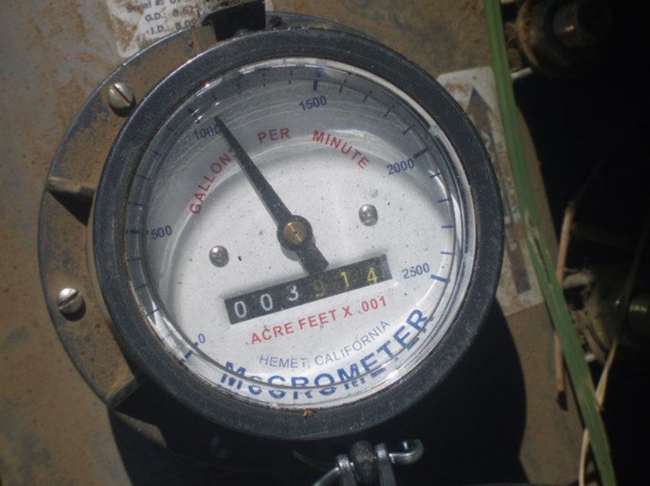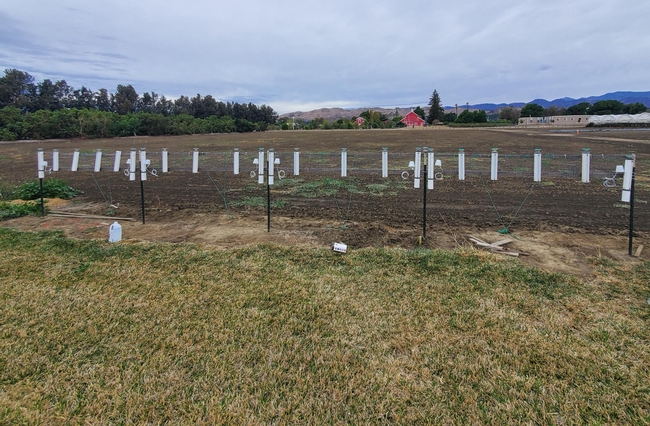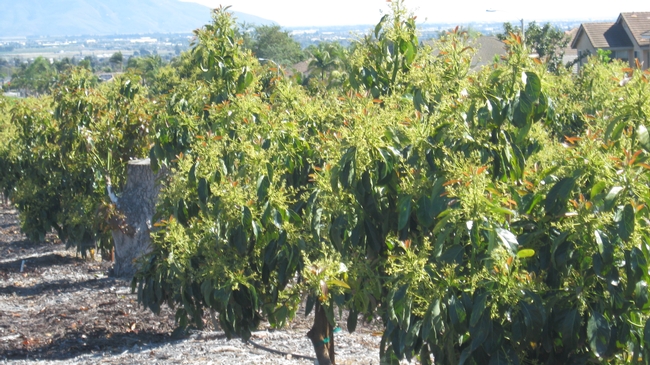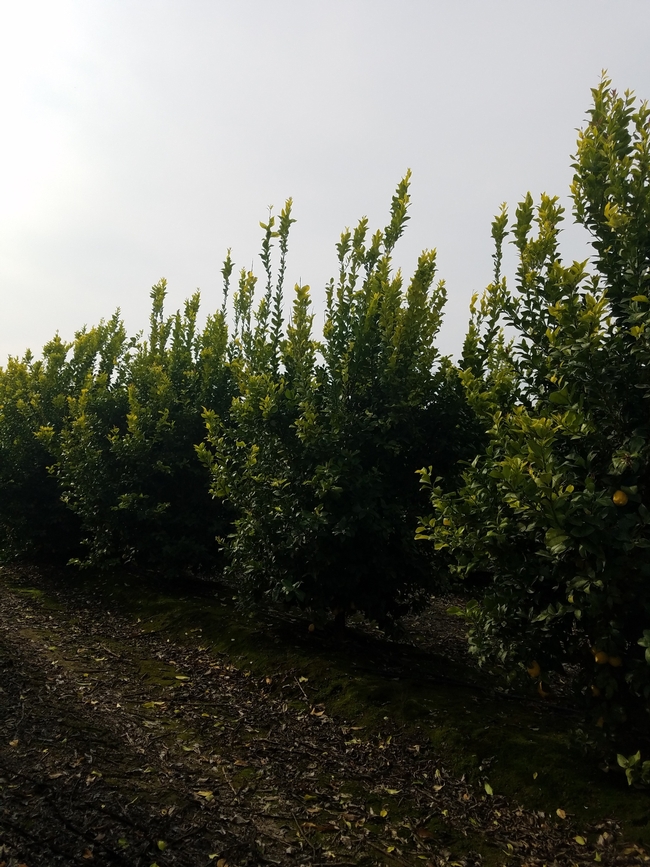- Author: Ben Faber
From Stanford: Future Water Resources
California isn't running out of water,” says Richard Luthy. “It's running out of cheap water. But the state can't keep doing what it's been doing for the past 100 years.”
Luthy knows. As a professor of civil and environmental engineering at Stanford, as well as director of a National Science Foundation center to re-invent urban water supply (known as ReNUWIt), he has spent decades studying the state's metropolitan areas.
In a new journal article, he argues that California cities can no longer rely on their three traditional water-coping strategies: over-drafting groundwater, depleting streams and importing water from far away. His analysis focuses on several strategies that, taken together, can help cities provide for their growing population with prudent public policies and investments:
Conserve
Conservation is cheap, says Luthy. Eliminating lawns or taking shorter showers are behavioral changes that don't require new spending on infrastructure.
Some cities have already made great strides. Los Angeles, for example, added 1.1 million residents between 1990 and 2010, but kept total water consumption flat through conservation, as homeowners and builders install things like low-flow toilets and high-efficiency washing machines. Similarly, two dozen San Francisco Bay Area cities cut total consumption by about 23% between 2004 and 2016 even as their populations grew by 10%.
But conservation isn't enough to match population growth. Although Southern California water officials recently predicted that by 2040 expanded conservation efforts should save enough water to supply about 2.3 million new residents, officials also expect population to grow by 3.1 million by then.
California can do more, Luthy says. About 10% of water distributed in urban areas is lost to leaks. Since the last drought, California utilities have conducted water loss audits to curb such waste. “Conservation is essential to help meet urban water demand, but we also need other measures to increase supply,” Luthy says.
Non-Potable Reuse
The reuse of non-potable water for irrigation or other purposes has a long history in California. More than a century ago, cities like Fresno were reusing sewage water to irrigate surrounding farms. In the 1980s, the Irvine Ranch Water District built a dual-distribution system that now delivers 25 million gallons per day of purified non-potable water to farms and businesses.
Cities could do the same today, but to recycle non-potable water, planners would have to build pipe networks to separate the non-potable water from the drinking water, at a cost of between $1 million to $10 million per mile.
Most short-distance opportunities have already been implemented. That still leaves new opportunities for smaller, decentralized projects where wastewater is generated and needed. The Salesforce Tower in San Francisco, for example, will soon be recycling about 30,000 gallons of wastewater a day for all purposes except drinking. Distributed non-potable reuse is also catching on with tech campuses in Silicon Valley.
Potable Reuse
The real future, says Luthy, is potable reuse – making recycled water pure enough to drink.
Potable reuse is a process that begins by purifying wastewater in treatment plants and then feeding this cleansed water back into reservoirs or underground aquifers. Water utilities then mix the recycled water with new, fresh water to meet the standards for potability.
A number of counties and municipalities are already making advances in this area.
Orange County Water District has been a leader in potable reuse and the practice of “full advanced treatment” since 2004, and many other cities have plans to recycle at least some highly treated wastewater for drinking. For example, Los Angeles is currently considering an ambitious project to recycle virtually all its wastewater to eventually make it available for potable reuse by 2035 at a cost of $8 billion. A comparable project for the San Francisco Bay Area would involve expensive upfront infrastructure, but those initial outlays could ultimately be worth it as the supply of water imported from the Sierra decreases due to climate impacts and ecosystem needs, and the cost climbs, as expected, by 60% over the next decade.
Capture
Billions of gallons of storm water simply pour into the ocean annually. That needs to change, Luthy says. California's coastal cities were historically engineered to flush out storm water to reduce flooding, but today cities want to capture as much as possible and put it to use. Los Angeles already gets 10% of its water from storm water runoff, and hopes to more than double that by 2035. Like potable reuse, however, storm water capture often requires big investments in pipes, storage sites and treatment facilities. The capital costs of such infrastructure vary widely, depending on local conditions. But the median project cost is often cheaper than costs to import water in the future, even assuming it will be available, Luthy says.
Desalinate
The ocean has virtually limitless water, and some communities are taking advantage of desalination to meet their needs. San Diego Water Authority's desalination system, built at a cost of $1 billion, already delivers 50 million gallons per day – about 8% of its needs. But desalinating seawater is costly and energy intensive, and can harm marine life, which is why Luthy says other communities are desalinating brackish water from estuaries where rivers meet the sea. (Brackish water has a lower salt content than ocean water, which makes it easier and cheaper to treat.)
Alameda County already produces about 10 million gallons of drinking water per day by desalinating brackish groundwater in Newark. A partnership of five agencies in the Bay Area is considering a $200 million plant that could desalinate about 20 million gallons of brackish water per day from the North Bay estuaries for about the same cost per gallon as consumers currently pay to import water from the Hetch Hetchy Reservoir.
Deposit
It's an ancient story that climate change makes increasingly common: too much rain and snow in wet years, and not enough in dry ones. One way to deal with these extremes is to “bank” extra water from wet years in underground aquifers. This is possible because the state's major metropolitan areas are linked by the 400-mile California Aqueduct. Cities in the north can “deposit” water in wet years by not taking withdrawals from the aqueduct and allowing that water to be pumped out and stored instead in Kern County, heart of the agricultural region near the end of the aqueduct. In dry years, northern cities could make “withdrawals” by taking extra water from the aqueduct and rely on the water stored in Kern County to be pumped back into the aqueduct, to make sure that enough water continues to flow to cities in Southern California.
“No single one of these measures will work in isolation, but if we plan wisely now, urban water will be available when we need it,” Luthy says.

- Author: Ben Faber
If you're sticking close to home these days and looking for something to do (or looking for something for kids to do) the Xerces Society has several bee monitoring guides and tools worth checking out.
Developed for conservationists, farmers, land managers, restoration professionals, and community scientists, the Bee Monitoring Protocol and Community Science Guides are useful for documenting how native bee communities change through time in pollinator habitats. The publications include an introduction to bee identification, a detailed monitoring protocol, and data sheets for different habitat types.

- Author: Ben Faber
Efficient and precise irrigation management is critical if California producers are to maximize crop quality, conserve water, and protect the environment. The use of evapotranspiration (ET) estimates is a significant component of irrigation management. ET refers to the sum of water lost from the soil (evaporation) as well as that used by the crop (transpiration). While the California Irrigation Management Information System (CIMIS) network of weather stations derive daily ET values, there is a perception that CIMIS does not produce accurate ET estimates for all locations. This view is particularly prevalent in the canyons of Ventura County where weather conditions differ substantially compared to CIMIS locations. Since avocado and citrus thrive in these areas, it was concerning when it was determined that ET scheduling is not widely used.
That is, a Ventura County Resource Conservation District (RCD) review of California Department of Food and Agricultural State Water Efficiency and Enhancement Program (CDFA SWEEP) projects concluded that Ventura County growers substantially lagged their state-wide peers with respect to implementing ET-based irrigation scheduling (14% versus 44%).
RCD seeks to reverse the low implementation of ET-based irrigation scheduling within Ventura County by using simple, rugged on-site ET devices (atmometers) to determine on-site ET values. These on-site values will be compared to CIMIS values to determine local correction factors and develop refined ET maps for the canyon and valley areas. RCD will present these results at outreach events and provide workshops demonstrating how ET data, whether from CIMIS or on-site atmometers, can be used for irrigation management.
PHOTO: Atmometer Test/Calibration Site @ UC Hansen

- Author: Ben Faber
April, 2020 CAS/CAC/UC
Avocado Grower Meetings
The original field meeting for avocado growers was canceled this year. This was to be an opportunity for growers to get out and see, touch and interact with other growers and people experienced in the various topics that were to be covered. The meetings were to be in real groves at Cal Poly San Luis Obispo, Pine Tree Ranch in Santa Paula and Rancho Aqua Tibia in Pauma Valley. The discussion and viewing topics ranged from 1) Planting Density, 2) Pruning, 3) Root Rot Management, 4) Pest Monitoring, 5) New Scions/Rootstock and 6) the Healthy Soils Program. We had a range of speakers arranged for the different sites to show, demonstrate and spark discussion. The actual sessions were designed so that every topic got covered and everyone got to hear the highlights of the topic in a 15 minute period, before moving on to the next topic. For the Scion/Rootstock session, this would have been just a brief introduction before the more elaborate workshop of that topic which will be held in June. The enclosed outlines and references cover the topics that would have been covered at these field meetings. They are not a substitute for actually being out in the field, but hopefully they will keep you thinking about how to improve your avocado production.
Planting Density: Tim Spann of CAC
Pruning: Gary Bender, Sonia Rios of UCCE and Gabe Felipe of Mission Produce
Root Rot Management: Ben Faber of UCCE
Pest Monitoring: Enrico Ferro, Tom Roberts, Jane Delahoyde, Jim Davis
New Scions/Rootstocks: Mary Lu Arpaia, Patricia Manosalva of UC Riverside
Healthy Soils Program, Alli Fish, Esther Mosase of UCCE; Lance Andersen of Mission RCD; Jamie Whiteford of Ventura RCD; Claire Balint of Cal Poly; Mary Matava of El Corazon Compost

- Author: Ben Faber
Lemons Hit Hard by Covid-19 Losses
Lemon growers are seeing good production this year, but the market for choice lemons has been ruined by COVID-19 food-service industry losses.
“We've seen 20 to 25 percent decrease in fruit movement, and that's mainly attributable to the decline in the food-service industry,” according to Ventura County lemon grower Will Pidduck.
Ironically, it is otherwise a good year for lemons in Ventura County. “We're growing great quality fruit. The quantity is great,” said Pidduck.
However, with the coronavirus pandemic forcing the closure of restaurants, schools, cruise lines and other commercial food-service operations, the market for an entire class and size of lemon has all but vanished.
“That's a big hit,” Pidduck said. As a fourth-generation citrus grower in the Ventura area, Pidduck also grows mandarins, oranges and avocados, but is primarily a lemon grower.
“A large portion of the choice fruit goes to the food-service industry. And without that industry, it's bad. The movement has slowed dramatically on the choice fruit,” Pidduck said. “We're still moving the fancy, the higher quality fruit. But for the choice and some smaller-sized fruit, it definitely slowed way down.”
And what is happening in the global lemon market? from Fresh Plaza




